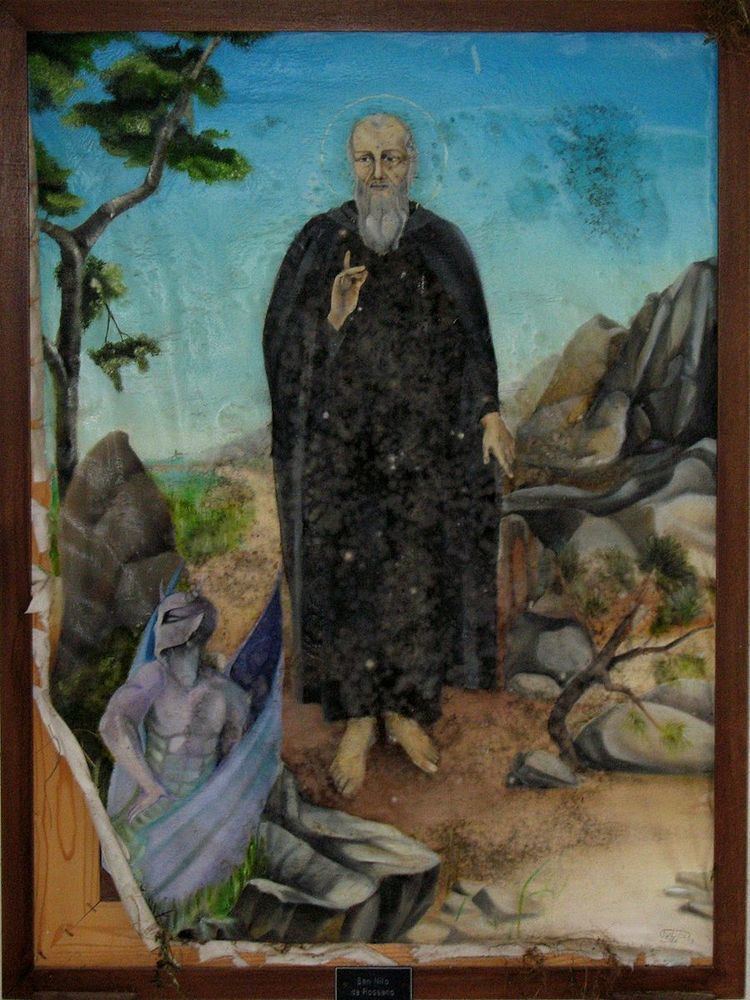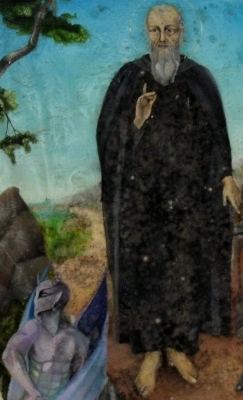Feast September 26 Name Nilus Younger | ||
 | ||
Died December 27, 1005, Tusculum | ||
Saint Nilus the Younger, (Italian: San Nilo di Rossano, Greek: Όσιος Νείλος, ο εκ Καλαβρίας), (910 – December 27, 1005), was a monk, abbot, and founder of Italo-Greek monasticism in southern Italy. He is venerated as a saint in the Eastern Orthodox and Roman Catholic churches, and his feast day is celebrated on September 26 in both the Byzantine Calendar and the Roman Martyrology.

Biography
Born to a Greek family of Rossano, in the Byzantine theme of Calabria, for a time he was married (or lived unlawfully) and had a daughter. Sickness brought about his conversion, however, and from that time he became a monk and a propagator of the rule of Saint Basil in Italy.
He was known for his ascetic life, his virtues, and theological learning. For a time he lived as a hermit, later he spent certain periods of his life at various monasteries which he either founded or restored. He was for some time at Monte Cassino, and again at the Alexius monastery in Rome.
When Pope Gregory V (996–999) was driven out of Rome, Nilus opposed the usurpation of Philogatos of Piacenza as antipope. Later when Philogatos was tortured and mutilated he reproached Gregory and the Emperor Otto III for this crime.
Nilus' chief work was the foundation in 1004 of the famous Greek monastery of Grottaferrata, near Frascati, on lands granted him by Gregory, count of Tusculum; he is counted the first abbot. The abbey continues in the Byzantine rite. He spent the end of his life partly in the Sant'Agata monastery in Tusculum and partly in a hermitage at Valleluce near Gaeta. He died in the Sant'Agata monastery in 1005.
Saint Nilus is revered as the patron saint of scribes and calligraphers.
